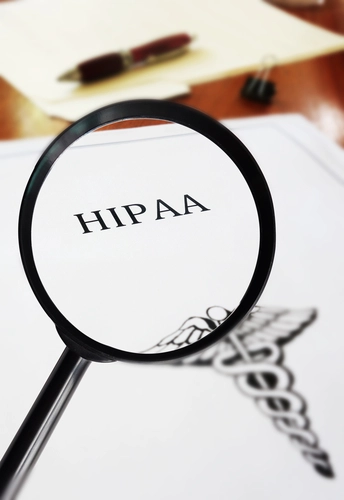CPT® Panel Planning Big Changes for 2021 E/Ms

If you’re fond of 99201, get ready to be heartbroken. Outpatient evaluation and management (E/M) coding is getting a major overhaul very soon. The recent 2019 CPT® Editorial Summary of Panel Action lays out several changes that will affect all PM coders. There have been rumors, speculation, and hearsay; but with the publication of the Summary, we now have a much clearer idea of what may lie in store for coders in terms of additions, deletions, and revisions. Here are some of the biggest changes coming on January 1, 2021, along with expert input about how it will impact you in your daily work. Remember, 2021 is a long way off; stay tuned for any changes that could change again between now and the implementation date. CPT® Putting 99201 Out to Pasture The first big change outlined in the Summary is the deletion of 99201 (Office or other outpatient visit for the evaluation and management of a new patient, which requires these 3 key components: A problem focused history; A problem focused examination; Straightforward medical decision making …). Impact: According to experts, this change shouldn’t be too profound for most coders. “I honestly don’t know the last time I audited/coded a 99201,” says Suzan Hauptman, MPM, CPC, CEMC, CEDC, director compliance audit at Cancer Treatment Centers of America. “Its elimination helps to align the descriptors more with the available levels of service. Also, having four levels of new patient services requires the documentation to clearly illustrate complexity of the patient’s case; there’s no middle ground.” This change seems to have a lot of support among experts. Donelle Holle, RN, a healthcare, coding, and reimbursement consultant in Fort Wayne, Indiana, “completely agrees” with deleting 99201. “I cannot even come up with a visit where the only history obtained in a new patient would be one HPI [history of present illness]. It’s kind of like asking the patient: ‘So you have a cough and a fever? — [which are] associated signs and symptoms—and then not asking another question,” Holle explains. Marcella Bucknam, CPC, CCS-P, COC, CCS, CPC-P, CPC-I, CCC, COBGC, revenue cycle analyst with Klickitat Valley Health in Goldendale, Washington, agrees with Hauptman and Holle; the change shouldn’t have too much impact. Caveat: The 99201 code could impact some practices that use it out of caution, Bucknam says. “[99201] was always for straightforward decision making, which means it was really for visits when the patient didn’t really need to see the doctor because they would get well on their own. For new patients, this would be pretty rare,” she explains. “There may have been practices using this code because they thought it was ‘safe,’ but really it just didn’t make much sense in terms of the scenario that would be appropriately billed with this code.” New Rules Coming for History, Exam, and MDM The Summary also calls for “removing history and examination as key components for selecting the level of E/M service but adding the requirement that a medically appropriate history and/or examination must be performed in order to report codes 99202-99215.” This explains why CPT® is deleting 99201. “Since 99201 and 99202 have the same level of medical decision making [MDM], when you remove the levels of history and exam from the descriptors, the codes become virtually indistinguishable; hence the deletion of 99201” notes Kent Moore, senior strategist for physician payment at the American Academy of Family Physicians. Additionally, “with the new emphasis on MDM as one of two ways to select office visit codes, a lot of work has gone into better describing and distinguishing levels of MDM for clarity. This extends to revising the titles of the three MDM elements,” Moore notes. Those changes include: Analysis: “This makes total sense. The physician may only be dealing with one diagnosis, but because of the patient’s co-morbid conditions, the physician had to address other issues that may or may not be actual diagnoses,” explains Hauptman. According to Bucknam, this ruling makes things a lot clearer for coders. “There was always a certain amount of confusion about whether and how to count diagnoses. If a diagnosis was listed but there was no documentation that specifically addressed that diagnosis, could you count it? How much management constituted management? If you just asked how the patient was feeling, did that count? “I imagine there will be a lot more information and details when the new codes come out; but in any case, it’s easier to see what the number and complexity of problems address means than the more vague number of diagnoses of management options. It’s clear that just listing a diagnosis is not enough, you get credit for the problems you addressed during this visit.” Analysis: “I think that this change will require some more explanations, but overall I think they will be looking for more information about how the data was used,” says Bucknam. “It won’t be enough to just pull in an X-ray interpretation or lab results; [payers] will want some discussion of the significance or the result and how that information will be used in the treatment of the patient.” Analysis: The change in titling more appropriately illustrates what the physicians are doing. They are managing a patient or perhaps a condition the patient has,” explains Hauptman. “This helps to clarify that the whole patient is being managed and not just the one issue in a bubble. Multiple factors go into making patient care decisions and managing the patient; this brings light to the education of the physician and the options available to the healthcare team for the betterment of the patient.” Times They Are A-Changin’ … As we already know from the Medicare Physician Fee Schedule (MPFS), beginning on January 1, 2021, Medicare plans to let you choose E/M levels based on the level of MDM your provider engages in during the encounter or the total time of the encounter. This has led CPT® to replace the words “typical time” with the words “total time spent on the day of the encounter,” along with changing the times for each of the codes. “The ‘typical time’ currently included in the code descriptors only reflects face-to-face time. But since most office visits have some pre- and post-visit time involved, too, the change to ‘total time’ on the date of the encounter will also include pre- and post-visit time that day,” says Moore. The Summary does not say what the new times will be, however. Holle has some issues with these potential changes. “I do completely disagree with having the level determined either by MDM alone or by time spent in performing the service. However, I do like the fact that they would change the typical face-to-face time to total time spent on the encounter,” she says. “This would mean that the time factor would not have to be based on just counseling. I could, however, see further issues with providers timing every visit although they have stated in this revision that the time would be reassessed.”




